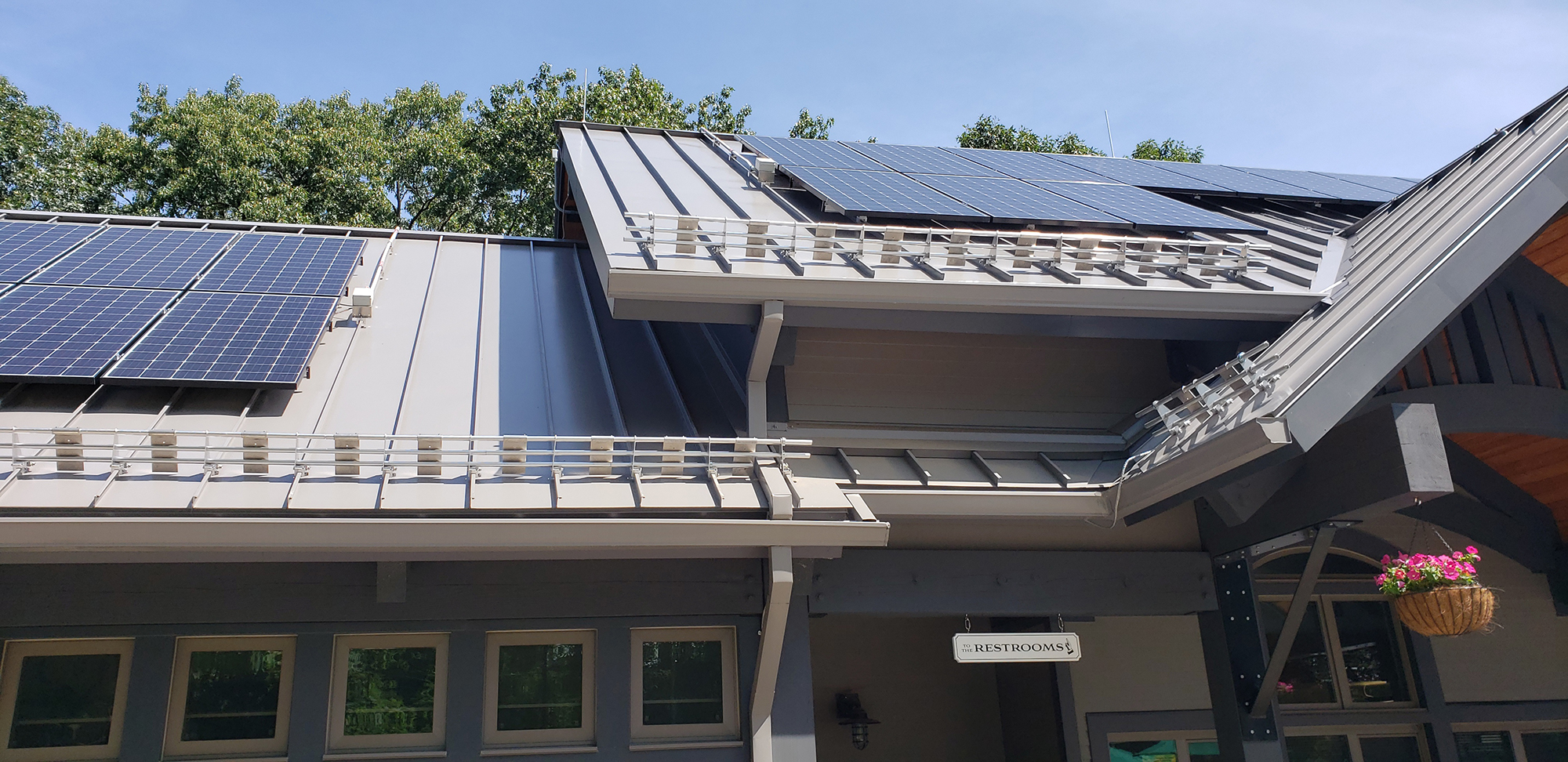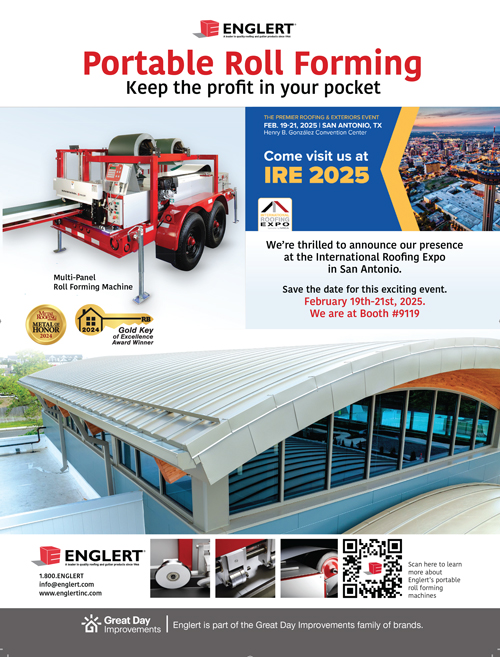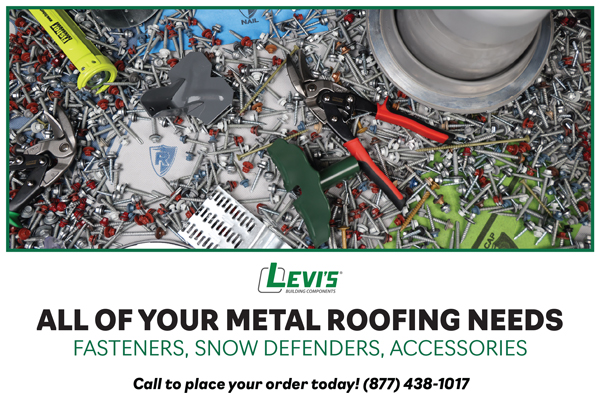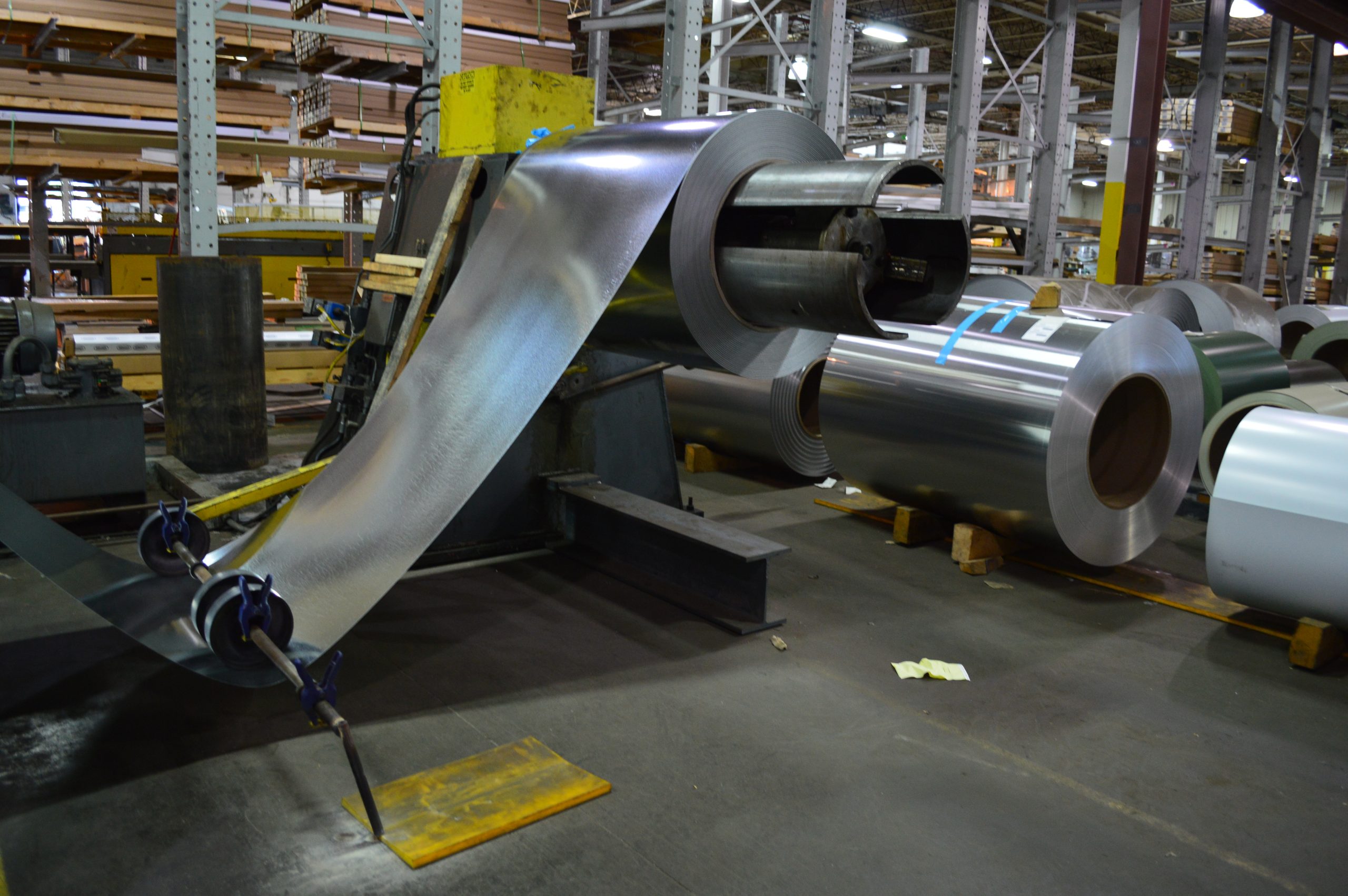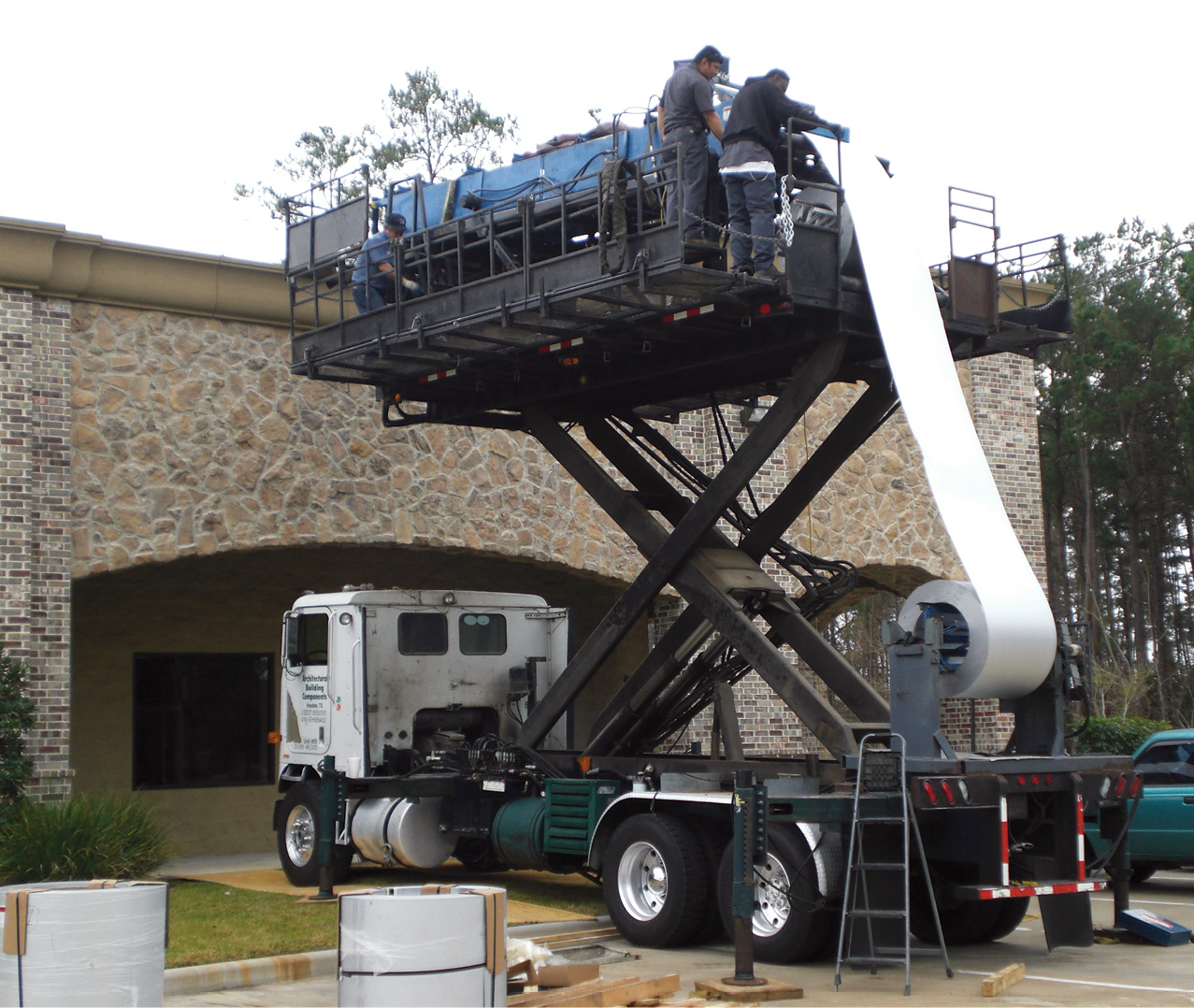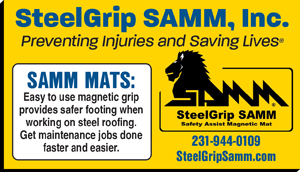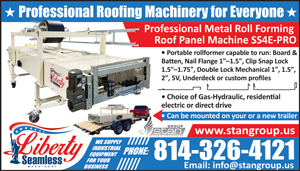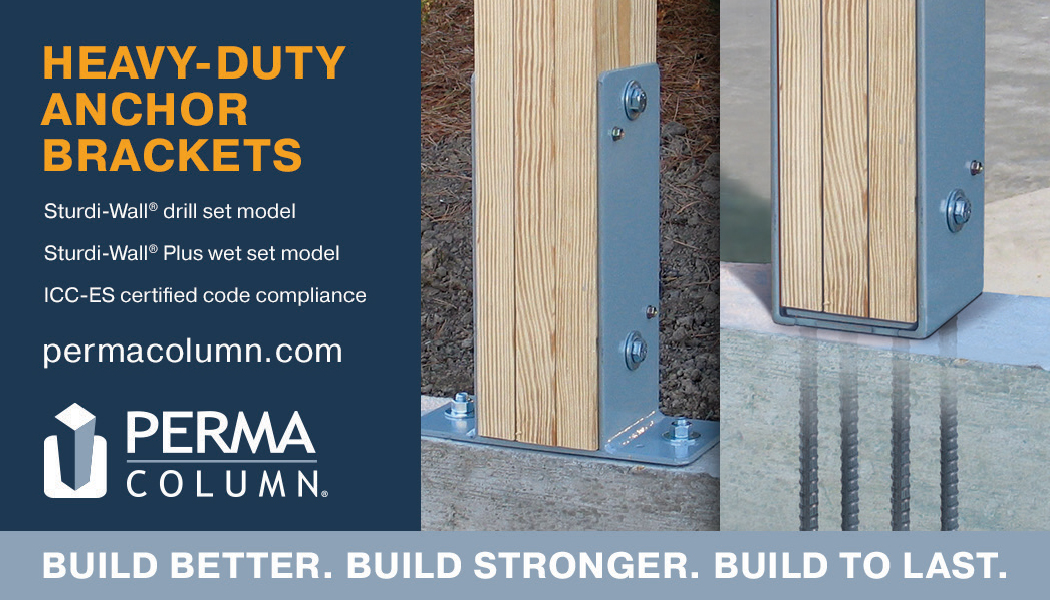Accessories provide additional benefits and increase your sales
By Anthony Brass
Standing seam metal roofing not only provides a platform for mounting accessories, it also can provide you with additional profit. When you supply roofers and builders with components that address their clients’ concerns, you are actually providing them with solutions.
Accessories you may wish to supply in addition to panels and trims include snow and ice retention systems, solar systems, rain handling, ventilation, and decorative features like cupolas and weather vanes. The more accessories you can supply that solve your customers’ problems, the more profit potential there is.
Snow and ice retention systems are a great add-on to your solar array setup and prevent dangerous snow avalanches that can occur when large volumes of snow accumulate on the roof or solar panel. “It’s a good idea to plan ahead for snow retention when considering solar due to local fire codes and spacing requirements,” cautions Caroll Marston, Sales and Engineering for AceClamp, which specializes in non-penetrating roof attachment solutions.
Snow guard options on metal roofs include through-fastened, non-penetrating guards that attach to standing seams, and stick-on guards. Residential clients often ask Cherry Fork Metals owner Albert Shrock about adding snow and ice guards. He doesn’t need to bring it up during a sale, but he goes out of his way to recommend guards as add-ons for commercial clients.
Versatility brings value to accessories. Roofers are interested in using clamps designed for more than just snow and ice retention. In some cases, you can use the same clamps for solar attachments as you would use for snow retention, says Shrock.
Ice melt systems are another add-on option. Some systems are secured over a style “D” roof drip edge and hold a single commercial-grade, self-regulating heat trace cable in place for direct heat transfer to roof edges. Only one heat trace cable is needed to prevent ice dams and icicles on roof edges, resulting in minimal added energy costs for the consumer.
Homeowners prefer to have accessories installed by one contractor, says Doyle Pokorny, project manager, M.P.B. Builders. Many customers prefer a one-stop shop, where they only have to make one phone call. Supplying those contractors with gutters and covers, rain chains, weather vanes, and cupolas is a natural fit when you are already selling them panels and trims. Regardless of whether cupolas are cosmetic or functional, it’s a convenient upsell for roofers.
Gutters and covers complete a roofing package and give additional protection against water damage. Gutters can be roll-formed on or off-site. If the roofer can provide accurate measurements, components can be roll-formed in the shop and transported to the jobsite.
If the roofer is taking on gutter installation, they should have a discussion with the homeowner about keeping their gutters clean and functional, which presents yet another opportunity for you, the supplier. Gutter guards are a cost-efficient option. There are many types and styles including, but not limited to, K-style, gutter brushes and gutter screens.
Large and steep-sloped metal roofs shed a lot of water very quickly because metal is more slippery than other roof materials, which usually requires larger gutters; standard 4” and 5” gutters typically can’t handle the faster-running water. Roofers may need to advise customers about the appropriate gutter size (at least 6”) needed to accommodate the flow — especially when the roof pitch is more pronounced. Downspouts measuring 6” are also recommended to allow an easier flow of water and to prevent debris buildup.
Traditionally, downspouts transfer water to the ground. However, rain chains can be offered in place of downspouts. They guide rainwater from gutters to the ground along chains or other shapes, like cups. Offering rain chains or other decorative yet functional options is a way for you to set yourself apart from your competitors who only offer the basics.
Tips for Selling Add-Ons
Roofing packages with add-on options generate higher sales. The builder specifies products based on the owner’s needs, which are determined by asking questions throughout the sales process. After the necessities are determined, accessories are incorporated into the sales presentation. As a supplier, the responsibility is yours to educate the contractor about which accessories are available to them.
Owners do their homework and often know what they want. Packages that include accessories allow customers to finish roofs their way, at a single price. Products can be added to a package during the process, even when not immediately available. “If I don’t have it in stock, I tell them it’s a special order and can get it in,” says Shrock at Cherry Fork, which roll-forms its own panels. It’s important that all products be included in the project plan, so the cost is included in the financing.
Remind roofers that recommending add-on accessories is part of an incremental sale. It’s important to finalize their customers’ main requests and favored accessories first because budget concerns affect a client’s ability to take on suggested add-ons. However, it’s still an ideal time to build the sale with add-ons. Pokorny says he lets the customers lead the conversation about what they need or want. Then, he reiterates the benefits of those accessories and gives a price for each.
Since standing seam metal roofs lend themselves well to adding accessories after initial installation, as a supplier you may have incremental sales later. When you reconnect with a roofer, inquire to see if their clients need to add products, such as lightning protection. When following up, you can also ask for referrals or testimonials, which can lead to even more sales.
Conclusion
There’s a myriad of standing seam add-ons that you can supply roofers. Providing roofers with components that solve their customers’ problems helps them build more profitable roofing packages. Offering the solutions they need will keep your customers coming back to you and keep growing your sales. RF

